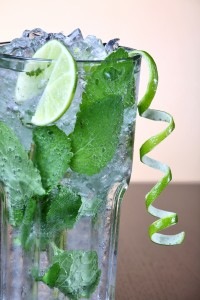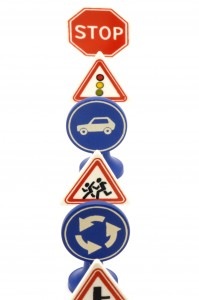“No, no, no, I’m not hungry,” you say to yourself – and, five minutes later you have a lap full of crumbs and a powdered sugar mustache.
Sound familiar? Why, oh why, does this happen? What’s with the loss of control over eating?
According to David Kessler, MD (The End of Overeating), 50% of obese people, 30% of overweight people, and 20% of healthy weight people say they have a loss of control over eating.
Eating Triggers: Starting a course of events
A trigger is something that sets a course of events in motion, like overeating.
Eating triggers generally fall into three separate categories: food, feelings, and the environment.
Trigger Food
- a specific food that sets off a course of overeating where you lose control and eat an excessive amount
- usually a combo of sugar and fat – like brownies or gooey cookies – or a combo of fat and salt – have you downed your popcorn in the movies, lately?
- Don’t confuse your food triggers with your favorite foods (the ones that you really like), your comfort foods (ones that you link to home and happiness), or food cravings (when you want a food you haven’t had in a while)
- a true food trigger is the actual food, not a feeling or place that triggers the out of control eating – think: an open bag of chips – bet you can’t eat just one regardless of where you are eating or how you are feeling
Trigger Feeling
- an emotion, good or bad, that causes you to overeat
- anxiety and sadness are common triggers
- food triggers prompt overeating of a specific food; general out of control overeating — the kind where food is often shoved in the mouth as quickly as possible in large quantities – can be precipitated by an emotional trigger
Trigger Environment
- a specific situation or place that starts a period of overeating
- common examples might be walking into a movie theater (popcorn), going to a buffet restaurant (one or two helpings of everything), attending a sporting event (how many hot dogs?) or visiting a relative (cookies, pie, and cake?)
Eating Triggers Are All Around You
Bottom Line – eating triggers are commonplace. When you bump up against some of yours, recognize them for what they are and have a strategies to deal with them.
Often the triggers are linked – this happens often, sometimes by design. Think about the sugar/fat and salt/fat triggers and fast food restaurants, desserts in fancy restaurants, your local bakery, the gas station convenience store. What do they have in common? Lots of food with sugar/fat and salt/fat combinations. They stare you in the face wherever you turn and at whatever hour. Stir in some feelings and emotions, a not infrequent occurrence, and you have the perfect set-up for overeating.
Ways To Outsmart Food Triggers
- Figure out which food makes you lose control. Is it potato chips, chocolate chip cookies, ice cream, or mac and cheese? We all have our particular triggers.
- What kinds of feelings make you run for the fridge? Is it when you are sad, anxious, really happy, or just procrastinating? Once you can identify the feeling, try to substitute a behavior other than eating – maybe a walk or a project. Make a deal with yourself: if I do X then I can eat Y. But you have to do X first!
- Be savvy and know when you are in the emotional danger zone where you are on the brink of rapidly spiraling out of eating control.Educate yourself about which kinds of foods are hidden saboteurs – or maybe not so hidden. Beware the sugar/fat, salt/fat, or sugar/fat/salt combos.
- Educate yourself about which kinds of foods are hidden saboteurs – or maybe not so hidden. Beware the sugar/fat, salt/fat, or sugar/fat/salt combos.
- Know your environmental triggers. If the gas station convenience store screams candy bar then pump your gas at a gas station with no store. If you have a history of overeating at X restaurant then go to Y instead. If you know that you always overeat at Aunt Mary’s (could be all three triggers: food, feelings, and environment are operational at her house) then have a strategy or plan in place to handle the situation. Or maybe invite her to your house.
- Keep the darn trigger foods out of your house. Or, if they have to be there for other family members, or maybe for a party, make them difficult to get to. Put them in the basement or the garage. Make them inconvenient or really difficult to get to. Not only is out of sight out of mind operational, we also tend to be lazy. The more effort you have to exert to get to the food, the less likely you are to eat it.
- This is a tough one: sometimes you have to avoid thinking, talking and reading about food. Brain imaging research suggests that the addictive response of the brain to food could by calmed by not thinking about food. Obviously, you can’t be abstinent from food – you need to eat – but long conversations about it, might be more than your brain can bear before you succumb to the bakery or vending machine. Don’t linger in the grocery store and skip the gourmet shop that opened three blocks away.
- And, the time tested – wait at least 15 minutes then allow yourself to have the food – often works. Better yet, wait 15 minutes, try to create a diversion to get out of your trigger feeling, and change your environment – get out of the kitchen or away from the bakery aisle.




